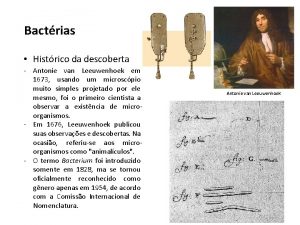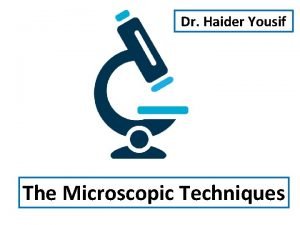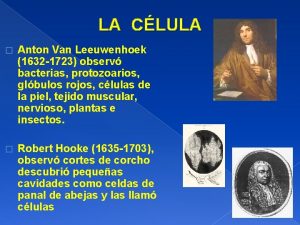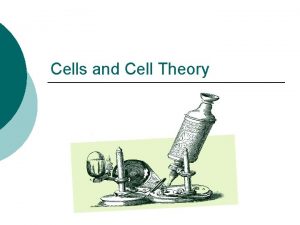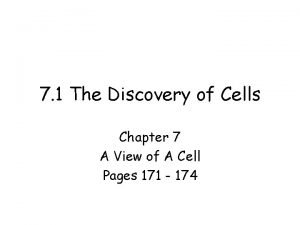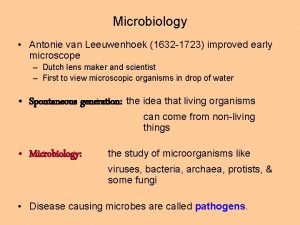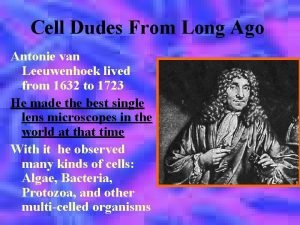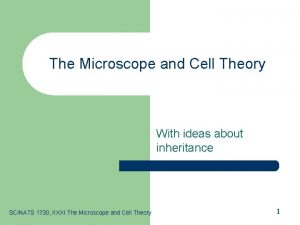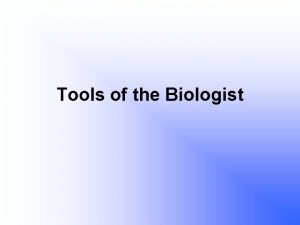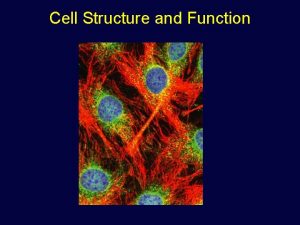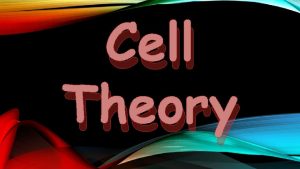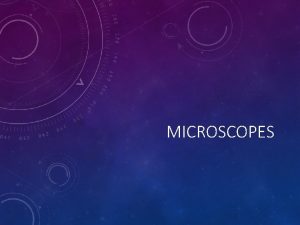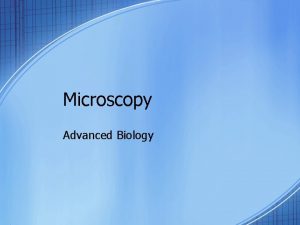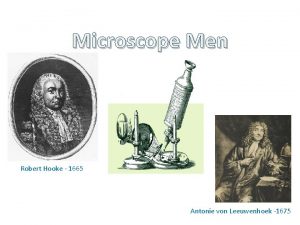Anton von Leeuwenhoek was the first to use

















- Slides: 17


Anton von Leeuwenhoek was the first to use carefully ground magnifying lens to look at living organisms and body fluids. He even examined material that he scraped from between his own teeth.

With his microscopes Leeuwenhoek discovered a whole new world of living things too tiny for the eye to see.

Englishman Robert Hooke was the first to coin the word “cell” when looking at cork under the microscope. The square plant cells reminded him of cells in a monastery.

A Simple Microscope has only one lens – like a magnifying glass.

Eyepiece Nose A Compound Microscope has two lenses – one in the eyepiece and one on the nose. This multiplies the magnification of the image. Can magnify about 1000 times the objects size!

An electron microscope focuses a beam of electrons on the specimen. Can magnify about 1000 times more than the light microscope! Dust Mite Gross!!! Cannot be used to seeing living cells. . . Only a light microscope can look at living things.

Ocular Another name for the eyepiece is Ocular. On most ‘scopes it magnifies 10 times.

• The objective lenses are found on the rotating nosepiece. Low Power • There may be several but only one is used at a time. • Most of our ‘scopes have high power and low power objectives. High Power

On our microscopes, the low power objective magnifies 10 times. On our microscopes, the high power objective magnifies 40 times.

Total magnification= ocular lens x objective lens

Parts of the Microscope

Ocular Arm Low Power Objective Diaphragm Coarse Focus Fine Focus High Power Objective Stage

Field of View Field of view is a way of saying how much of the total image you are seeing through the circular microscope lens. e

e When the magnification increases, the image gets bigger, but the field of view gets smaller – you’re seeing less of the letter “e”.

Measuring with a Microscope 1 2 Use a clear plastic ruler and clip it on the stage and focus it.

The ruler shows a field of view of About 2. 25 mm There are 1000 μ m in one millimeter. 2. 25 mm x 1000 = 2250 μ m
 Antonie van leeuwenhoek
Antonie van leeuwenhoek 1673 anton van leeuwenhoek
1673 anton van leeuwenhoek Anton van leeuwenhoek
Anton van leeuwenhoek Anton van leeuwenhoek cell theory
Anton van leeuwenhoek cell theory Leeuwenhoek
Leeuwenhoek Anton van leeuwenhoek célula
Anton van leeuwenhoek célula Anton van leeuwenhoek teoria de la generacion espontanea
Anton van leeuwenhoek teoria de la generacion espontanea Antonie van leeuwenhoek cell theory
Antonie van leeuwenhoek cell theory Anton van leeuwenhoek cell theory 1673
Anton van leeuwenhoek cell theory 1673 Anton van leeuwenhoek 1673
Anton van leeuwenhoek 1673 Anton van leeuwenhoek accomplishments
Anton van leeuwenhoek accomplishments Compound microscope
Compound microscope Contribution of antonie van leeuwenhoek in microbiology
Contribution of antonie van leeuwenhoek in microbiology Antonie van leeuwenhoek
Antonie van leeuwenhoek Antoni van leeuwenhoek bakterien
Antoni van leeuwenhoek bakterien Antonie van leeuwenhoek cell theory
Antonie van leeuwenhoek cell theory Microscope discovered by
Microscope discovered by Leeuwenhoek cell theory
Leeuwenhoek cell theory

